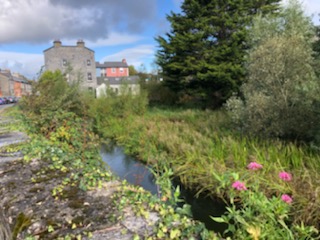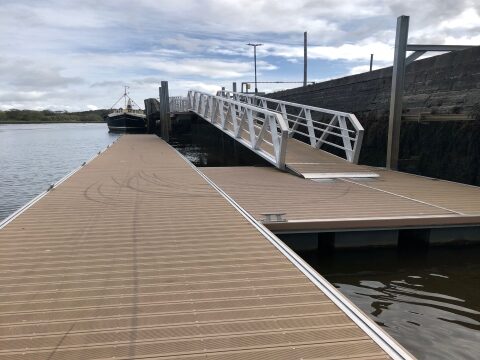St. Claires River Desilting
- Client: Galway City Council
- Location: St Claires River, Galway City
About this Project
P&D Lydon carried out desilting works and flood mitigation measures on St. Claire’s River in Galway City. The desilting works were required due to the flood risk and the flood damage that would be caused to properties along Presentation Road, Nuns Island and Maderia Court areas of Galway City due to blockage or obstructions to flows in the River Channel.

Works were carried out in conjunction with Inland Fisheries Ireland and Galway City Site Ecologists.
St. Claires River is part of Lough Corrib which is an SAC.
Works included the following;
- P&D Lydon implemented all necessary environmental control
- measures around the works areas in advance of commencing works including, the installation of a Hytex root barrier over the invasive species and to cover with bog mats to prevent accidental puncturing. Silt fencing was erected along the river banks to ensure catchment of silt from placing the sand bags.
- Timber bog mats were used to gain access to the river bank as the ground was too soft to travel on.
- Site Clearance was carried out by mulching the existing vegetation with an excavator mounted mulcher.
- Galway City Council lowered the appropriate sluice gates to reduce the flow of water to the works area.
- Once appropriate access was formed double lined ton bags of sand were brought into the work site and stacked ready for placing in canal. A temporary dam was formed using the sand bags. These bags were tied/sealed first and placed starting from the near bank towards the stone wall across the opposite side. Each sand bag required a large rope / sling attached to aid removal at a later point. The Silt Curtain was then placed around the works zone prior to the excavating of the silt bank. A life buoy was also made available for operatives.
- Once these measures were all in place the silt bank along with vegetation was excavated using the 14-tonne long reach excavator placed on the banks. A Silt fence was be erected around the newly formed banks and some seed placed to cover area.
- The dam was left in place until other areas were also complete
- This process was repeated until all areas were complete.
- Other works included placing a layer of rock armour along the bank edge to prevent future erosion of the banks. These boulders were placed in a trench approx. 200-300mm below river bed level to prevent scouring causing them to become unstable.
- All river bed material removed from the river was inspected for eels/lampreys and transferred into the Eglinton Canal above Area 1 by bucket. The invasive species Zebra Mussel was encountered during the course of the works; therefore, all machinery was visually checked for their presence and steam washed/disinfected with Virkon Aquatic was used prior to leaving the sites.

